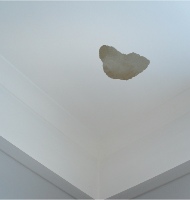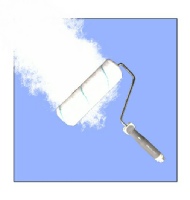


























There are many types of surface staining that require blocking prior to decorating, so as to stop them bleeding through new paint layers and reappearing.
The most common and persistent surface staining problems are caused by water infiltration however adhesive putties such as blu tack, fizzy drinks and wine, food, nicotine, blood and pen ink along with many other everyday substances, even when washed off, can leave permeable traces that damage subsequent paint films.
When decorating a surface which shows signs of water staining, it is essential that the cause of the leak is first located, repaired and the surface allowed to dry out.
A good technique in ascertaining whether the leaking has stopped is to draw a faint pencil line around the outer perimeter of the stain, wait a few days and if the stain has crossed the line, if it does it is possible that the leak is still live and further investigations and repair works may be required.
If you have access to a moisture meter then these are excellent for reading the moisture content in a surface and will also allow you to locate the core of a water leak as well as informing you the surface has fully dried out.
Seal stained areas with a trade quality stain blocking product, such as Zinsser BIN, Zinsser Cover Stain or International Stain Block; other brands are also available in both tinned paint and aerosol.
Aluminium paint is highly effective at sealing severe staining, another option is to use traditional oil based gloss paint however their disadvantage over specialised stain blocking paints is their drying times. Also when using gloss paint as a stain blocker on emulsioned areas there may be issues of paint film adhesion for subsequent water based coatings.
Trade quality stain block paints will always give the best results, they have been formulated solely for this purpose; they are both high opacity and quick drying allowing for rapid over-
When hanging wallpaper, any surface discolouration through water damage may require sealing, as there is a risk the stain may bleed through and damage the new wallpaper.

